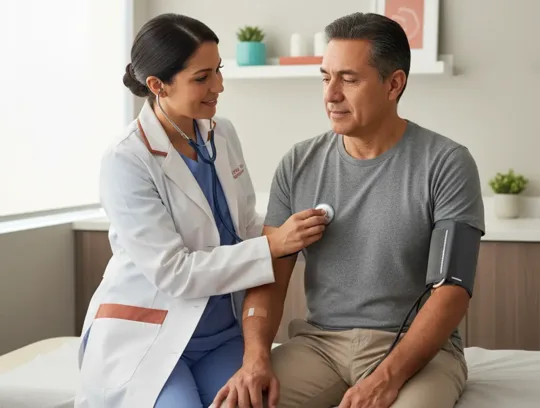Cancer survivors often face long-term health challenges post-treatment, including chronic conditions like hypertension, diabetes, and heart disease. Remote Patient Monitoring (RPM) offers a proactive approach to manage these conditions, providing real-time data to healthcare providers. This continuous monitoring enables early detection of complications, timely interventions, and personalized care plans, ultimately improving patient outcomes and quality of life.
According to the American Cancer Society, many cancer treatments can lead to long-term side effects, emphasizing the need for ongoing health monitoring. RPM bridges the gap between patients and providers, ensuring that survivors receive the necessary support to navigate their post-cancer health journey effectively.
Addressing Chronic Conditions Post-Cancer
The aftermath of cancer treatment can lead to various chronic conditions. For instance, chemotherapy and radiation may increase the risk of cardiovascular diseases, while certain medications can induce diabetes. In this context RPM allows for the continuous tracking of vital signs, such as blood pressure and glucose levels, thus enabling healthcare providers to detect and address issues promptly.
Moreover, studies have shown that remote monitoring can significantly reduce hospitalizations and improve the management of chronic conditions among cancer survivors. By leveraging RPM, healthcare providers can offer personalized care, adjust treatments in real-time, and enhance the overall well-being of survivors.

RPM: Enhancing Emotional and Psychological Support
Beyond physical health, cancer survivors often grapple with emotional and psychological challenges, including anxiety, depression, and fear of recurrence. RPM platforms can incorporate mental health assessments, allowing providers to monitor patients’ emotional well-being continuously. This holistic approach ensures that survivors receive comprehensive care addressing both physical and mental health needs.
Integrating psychological support into RPM not only improves patient satisfaction but also fosters better adherence to treatment plans. Patients feel more connected and supported, knowing that their healthcare providers are attentive to all aspects of their recovery journey.
RPM: A Path to Safer, Smarter Survivorship
RPM not only safeguards physical health—it also supports emotional well-being, fostering peace of mind for survivors and their families. Living with the uncertainty of recurrence or complications can be emotionally taxing. With that, patients know that their vitals and symptoms are being watched in real time, enabling providers to respond quickly if any issue arises. This ongoing connection offers a powerful psychological benefit, reducing anxiety and encouraging long-term adherence to healthy behaviors and follow-up routines.

Esvyda: Revolutionizing Post-Cancer Care with RPM
Esvyda stands at the forefront of RPM solutions, offering a bilingual platform that seamlessly integrates with Electronic Health Records (EHR). Moreover, our system provides real-time data analytics, which allows healthcare providers to make informed decisions swiftly. By continuously monitoring patients’ health metrics, Esvyda aids in the early detection of complications, thereby ensuring timely interventions.
Our platform supports value-based care by improving clinical outcomes, enhancing patient experiences, and streamlining care coordination. With Esvyda, healthcare institutions can maximize revenue while delivering high-quality, efficient care to cancer survivors, guiding them towards a healthier future.
Download this artice
RPM After Cancer: Firstly Protecting Long-Term Health
Cancer survivors often face long-term health challenges post-treatment, including chronic conditions like hypertension, diabetes, and heart disease. Therefore, Remote Patient Monitoring offers a proactive approach to manage these conditions, providing real-time data to providers.
Click Here

